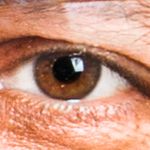 Adobe Community
Adobe Community
- Home
- Photoshop ecosystem
- Discussions
- what photoshop do need to convert photos to vector...
- what photoshop do need to convert photos to vector...
Copy link to clipboard
Copied
What version of photoshop do I need to convert pictures of autos or motorcycles to vectors?
 1 Correct answer
1 Correct answer
Hi
In Photoshop CC you can manually trace the shapes using the pen tool to build up the image in vector shapes. However if you want an automatic conversion you should use the image trace function in Adobe Illustrator, which is Adobe's vector illustration application
Dave
Explore related tutorials & articles
Copy link to clipboard
Copied
Hi
In Photoshop CC you can manually trace the shapes using the pen tool to build up the image in vector shapes. However if you want an automatic conversion you should use the image trace function in Adobe Illustrator, which is Adobe's vector illustration application
Dave
Copy link to clipboard
Copied
davescm's answer is correct. I would just like to add that even that there has been much progress done for vectorizing pictures, the solutions (any solution you will choose!) are not perfect and you still need some cleanup to do. Very often it helps "preprocessing" the data in Photoshop, before getting them to Illustrator.
Your pictures need to have a clean contrast for best results. Background removal is recommended.
Very often it is faster and produces better results when you have a talented artist doing the work of vectorizing.
Copy link to clipboard
Copied
A quick Google inquiry "photoshop plugin image to vector" will turn up several options.
Copy link to clipboard
Copied
Great tipp Norman!
Copy link to clipboard
Copied
I would not attempt to convert raster photos to vectors. The results are usually poor. Vectors are best for line drawings, shapes, icons and text.
Alt-Web Design & Publishing ~ Web : Print : Graphics : Media
Copy link to clipboard
Copied
As Nancy said, failure is more prevalent than success. Much depends upon the original image; lighting. composition and vantage point. On the other hand, in the days of film, making what Kodak called a tone-line conversion took over an hour, as I recall, and much depended upon the original image, as well.
First you made a density matching film positive from the negative, then sandwitched them together in register -- to cancel out the difference in tone -- film base to film base (which provided space between the emulsions).
Funky as it sounds, the next step was to place the films, with litho film as a bottom third layer on a turntable (an old record player) placed it at 45 degrees from a regular light bulb in the ceiling, turned on the record player and exposed the low-film-speed litho film. Develop the film in litho developer and you had a line conversion. A lot of work. But there was a joy that we don’t get in these digital days. On the other hand, maybe I am just old. The important things is that a bit of history provides valuable perspective.


